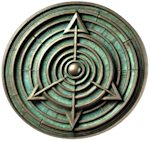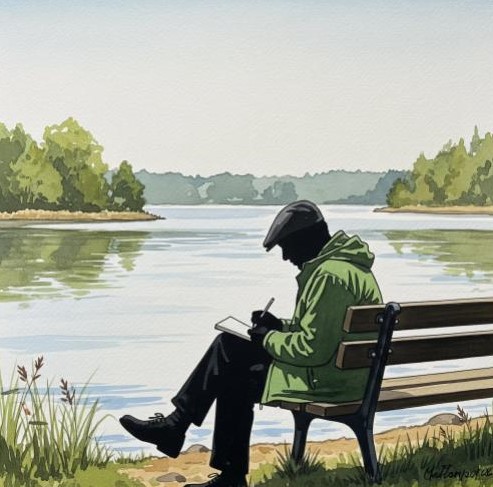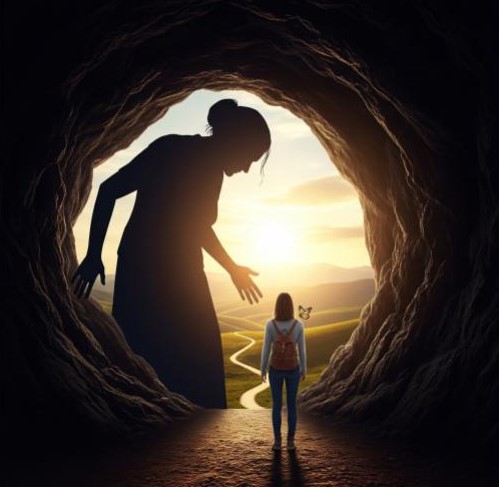Imagine you’re driving down the highway.
Whether you’re behind the wheel or just a passenger doesn’t really matter, nor does the kind of car you’re in at the moment. Certain details have been simplified to help paint a clearer picture. You’re on a two-lane road, bordered on both sides by protective walls. These walls even have fencing to keep wild animals out, anything that could disrupt or endanger your journey. Occasionally, on the right, there’s an option to exit, maybe to a rest stop or a county road. On the left side, signs remind you that you’re on the right track, showing how many kilometers remain to your destination. In life, those signs on the left represent our “vital roadside indicators”, our parents, our family, the culture and community we grew up in. Then there are teachers, school, college, coworkers, a new family, media, politics, religion, all the voices that guide and affirm that we’re on the ‘right’ road. Language itself can reflect this idea: we often hear phrases like someone has “strayed from the path” or that someone is “on the wrong path,” while religious contexts may call one figure “the way, the truth, and the life.” Whenever we feel like slowing down, there’s a pull to keep going, a pressure, internal or external, coming from behind us or in front of us, telling us we can’t stop because highways aren’t made for stopping. And when we do approach a potential turnoff, those “signs” whisper: don’t do it, keep driving, everything will sort itself out. And when things get ugly we’ve all heard it: “It’s just a phase”. So we push ourselves: be a good student, get better at math than music because that matters for high school. Get into a good high school, anything to make life smoother, and maybe a good university after that. There’s no built-in pause to explore who we really are. We assume we’ll “figure it out along the way.” From school to work, from work to building a family, from family to retirement, from retirement to…this predefined, efficient, and supposedly safe route is like a highway: fast, direct, proven. But eventually, something feels off. It’s like we’re running out of fuel. Fatigue creeps in. Then we spot a rest stop: gas station, bathroom, overpriced sandwiches.
We think, maybe I should pull over.
But a voice, maybe from within, maybe from outside, urges us to push through: just a bit longer, you’re almost there, press on. Or we think, “I’ll stop at the next one, it’s only 40 kilometers away.” And so, one rest stop after another flies past. Our energy keeps dropping. The exhaustion deepens. Then two things can happen: the car breaks down and we call for help, or we finally pull into a rest stop.
There, we take a moment. Use the bathroom. Grab a sandwich. Have a coffee. We pause and reflect: am I even heading where I truly want to go? Maybe we had hoped to turn onto a quieter county road, or hop on a bus with friends. But instead, we look back toward the highway and see our family, our coworkers, our peers speeding along. We can see they’re tired too. We know they’re low on energy. We try to wave them down, tell them it’s okay to stop. But their window of opportunity to our exit has passed, they might have to wait until the next one, if they make it.
And what if we get back on the highway? It feels stressful. Will we be able to merge in time? Will someone crash into us? Usually we manage somehow to get back on track, even if someone honks (because in life, just like on the road, there’s always someone honking at you).
Soon enough, we’re running low on fuel again (and fuel isn’t getting cheaper). We wonder: am I really this weak? Shouldn’t I be recharged by now? Others around us say, “You took your break, didn’t you? Why aren’t you 100% again?” And so the process repeats.
This is your rest stop. Whenever you feel the weight, the weariness, pause. Remember, easing off the gas isn’t the same as hitting the brakes. Use the bathroom. Refuel. Rest. Don’t forget to breathe. Take a moment to glance back. Embrace the things you passed, the things made you who you are today And when you’re ready to continue your journey, first reach out to all of those approaching our rest stop. Send out a quiet signal, like the calm voice of a GPS: “In 500 meters, there’s a safe place to pause. It’s okay.” We’re writing this story together. Welcome.


